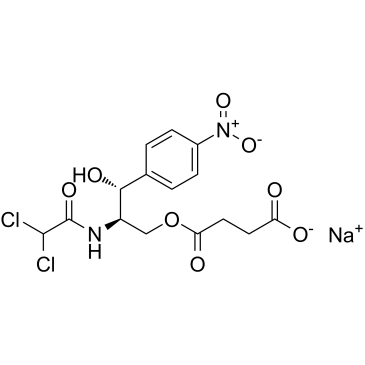The myelotoxicity of chloramphenicol: in vitro and in vivo studies: II: In vivo myelotoxicity in the B6C3F1 mouse.
D E Holt, C M Andrews, J P Payne, T C Williams, J A Turton
Index: Hum. Exp. Toxicol. 17(1) , 8-17, (1998)
Full Text: HTML
Abstract
1. Chloramphenicol continues to be widely used in many parts of the world despite its known haematotoxicity. Until now, elucidation of the mechanisms involved and any attempt at amelioration of the toxic effects have been hampered by the lack of an animal model. 2. In this study neither acute nor chronic administration of chloramphenicol as its succinate ester in the drinking water produced anaemia in mice as assessed by changes in peripheral blood parameters. 3. Chloramphenicol could not be detected in the bone marrow when the antibiotic was administered either in the drinking water or by gavage, although it was detected in the serum. 4. In marrow taken from mice after chloramphenicol succinate administration and cultured in vitro, depression of the differentiation of immature committed erythroid progenitors occurred 15 min after administration of the antibiotic by gavage. However, recovery was beginning to occur at 48 h after administration of chloramphenicol succinate at 50 and 200 mg/kg and this was then followed by an 'overshoot' response at the higher dose. A toxic effect was therefore achieved in the bone marrow but this was probably masked in the peripheral blood by enhanced proliferation. 5. Morphological evidence of apoptosis was seen in erythroid and myeloid precursors in mice treated with 200 mg/kg. 6. The data suggest that the effect of chloramphenicol was at the differentiation stage of the committed marrow progenitor cells rather than at the replication stage of the stem cells and therefore this response appears to mimic the reversible bone marrow depression seen in the treated patient.
Related Compounds
| Structure | Name/CAS No. | Molecular Formula | Articles |
|---|---|---|---|
 |
Chloramphenicol sodium succinate
CAS:982-57-0 |
C15H15Cl2N2NaO8 |
|
A commercial enzyme immunoassay method (EMIT) compared with ...
1988-09-01 [Clin. Chem. 34(9) , 1872-5, (1988)] |
|
Chloramphenicol succinate, a competitive substrate and inhib...
2004-08-01 [Toxicol. In Vitro 18(4) , 441-7, (2004)] |
|
Fluorometric quantitation of broth-cultured mycoplasmas by u...
1993-05-01 [J. Clin. Microbiol. 31(5) , 1303-7, (1993)] |
|
Metabolism of chloramphenicol succinate in human bone marrow...
2000-08-01 [Eur. J. Clin. Pharmacol. 56(5) , 405-9, (2000)] |
|
Haemotoxicity of chloramphenicol succinate in the CD-1 mouse...
1999-09-01 [Hum. Exp. Toxicol. 18(9) , 566-76, (1999)] |